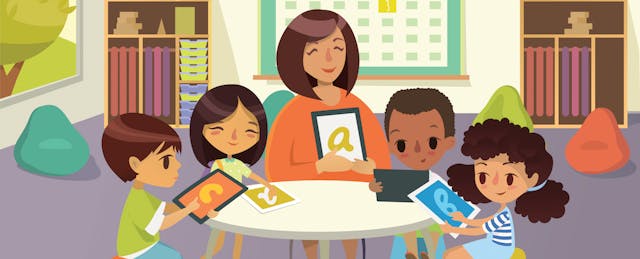To ban or not to ban, that is always the question when it comes to personal devices in the classroom. But rather than fight this uphill battle (Generation Alpha is forecasted to be more technological than any previous), let's figure out how to leverage these little machines. If used intentionally, mobile devices can be an express pass to exploring beyond the walls of our schools. While pushing students to learn outside our classrooms is a step in the right direction, how do we ensure that these experiences lead to deeper learning? Here are 5 ways to get to curate that practice by making your class a BYOD zone.
1. Accept Immediate Inquiry
Creating a culture of inquiry starts by piquing student interest and then slowly releasing students to seek the answers to their questions about complex problems. Often, this process takes time and includes various structures to ensure content mastery. While ensuring rigorous learning experiences is critical, we also must be mindful that we run the risk of schooling students out of their curiosity. If a student holds a device that could possibly answer a question that pops into her mind, or better yet leads them to asking more and/or improved questions, let’s leverage that by normalizing the basic use of personal devices to ask genuine questions about content covered in class, in the moment. If that still makes you nervous, you can ask students to document their questions and the answers they find when using their own device, or even ensure that they are asking quality questions with the help of the Question Formulation Technique or other question development strategies like these.
2. Devices to aid in organizing and collaborating with peers
Personal devices offer us adults immediate connection to our colleagues, either through email, messenger services or texting. While this form of digital citizenship is a skill set we may not feel comfortable developing in our students, it is one that working adults depend upon for collaboration. We can fight it or leverage it. To ensure educators maintain a professional demeanor while communicating with students, it's possible to use apps such as Google docs or Evernote rather than basic email/texting on mobile devices. Both of these apps offer wonderful ways to keep students organized and connected during the research or project process.
3. Keep ‘em engaged with real-time feedback
Have you ever been to an education conference and looked around the audience to find members staring into their devices, rather than the presenter, only to then peek at the twitter feed running on projectors alongside the stage that is frantically bumping tweets down the feed that are exploding with questions, connections and new ideas. Wouldn’t it be great if that could happen in our classrooms during every content presentation we offer? Your students may not be old enough for social media; it’s also likely banned at your school, but there are other synchronous ways to keep students engaged in real-time learning. Websites such as Poll Everywhere allow teachers to pose questions to students during presentations, demonstrations or lectures and students can respond with immediate responses displayed on a projector. Could eyes locked on a screen actually equal full engagement and participation?
4. Document learning and thinking through blogging when the good ideas hit you!
Sometimes your best thinking, reflections and ideas don’t come when you are assigned to do it. Often times great “aha!” moments come when you have moved on to the next task or location. Free blogging apps such as Wordpress have made it beautifully simple to jot down your thoughts in draft format (without publishing) to expand later. Such blogging apps also offer simple ways to upload pictures and capture learning through student work samples, events or processes.
5. Document and debrief field work with ease
Have you created your Shutterfly class website yet? If not, it is easy to set up and allows students to contribute with pictures. This is a powerful tool for field work when students are outside of the classroom, collecting real-world data, visiting locations and experts, and possibly not with you or their peers. What better way for them to share their experiences than by taking photos on their device that can then be uploaded in seconds to a private site- open only to classroom parents, teachers and students. This tool makes it incredibly simple for students to debrief their diverse experiences in the field with their classmates. Simply throw up the photo album on a projector and allow students to share out, ask questions and make connections amongst their classmates’ field work documentation.
The technology our students will interact with in the next decade is guaranteed to supersede our wildest expectations, so let’s give them the foundational skills to leverage simple technologies such as personal devices so they have the building blocks for greater challenges and advances that await them.


